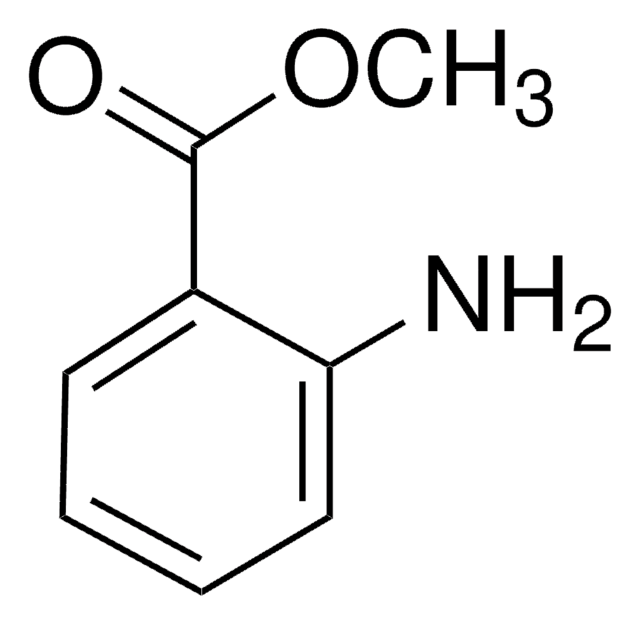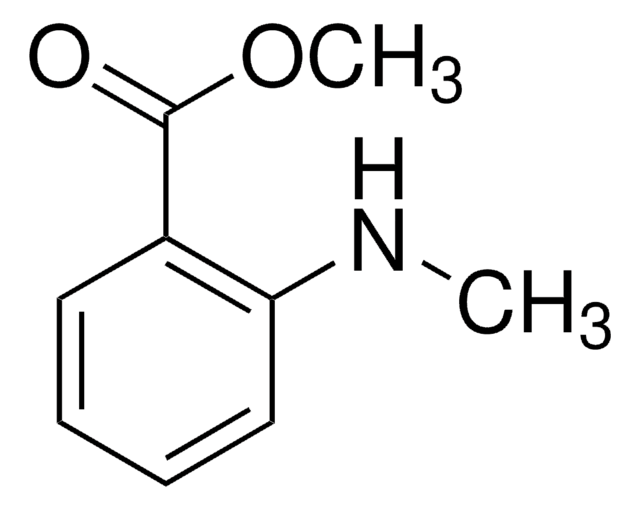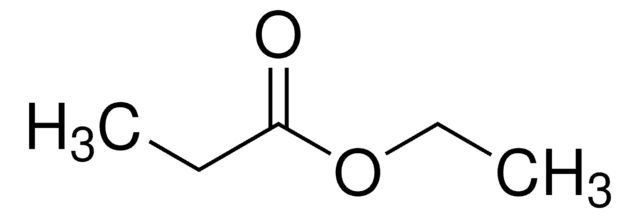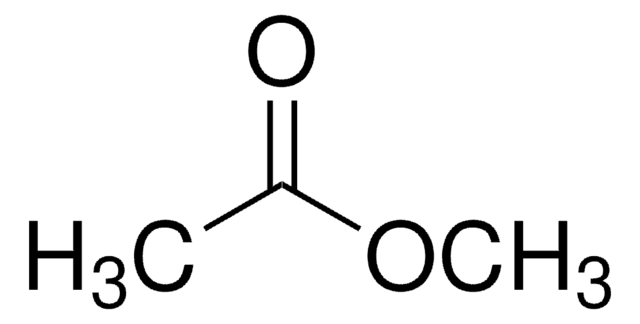W271802
Dimethyl anthranilate
≥97%, FG
Sinonimo/i:
Methyl N-methylanthranilate
About This Item
Prodotti consigliati
Origine biologica
synthetic
Livello qualitativo
Grado
FG
Kosher
Conformità normativa
EU Regulation 1334/2008 & 178/2002
FDA 21 CFR 172.515
Saggio
≥97%
Indice di rifrazione
n20/D 1.579 (lit.)
P. ebollizione
256 °C (lit.)
Punto di fusione
17-19 °C (lit.)
Densità
1.126 g/mL at 25 °C (lit.)
applicazioni
flavors and fragrances
Documentazione
see Safety & Documentation for available documents
Allergene alimentare
no known allergens
Organolettico
grape skin; floral; fruity; sweet
Stringa SMILE
CNc1ccccc1C(=O)OC
InChI
1S/C9H11NO2/c1-10-8-6-4-3-5-7(8)9(11)12-2/h3-6,10H,1-2H3
GVOWHGSUZUUUDR-UHFFFAOYSA-N
Cerchi prodotti simili? Visita Guida al confronto tra prodotti
Categorie correlate
Descrizione generale
Applicazioni
- Methyl N,N-dimethylanthranilate and ethyl propionate: repellents effective against spotted wing drosophila, Drosophila suzukii.: This study presents methyl N,N-dimethylanthranilate as an effective repellent, providing insights into potential pest management strategies for protecting crops from Drosophila suzukii, a significant agricultural pest (Conroy et al., 2024).
- Investigation into the characteristic volatile flavor of old duck.: This article discusses the role of dimethyl anthranilate in influencing the volatile flavor profile of aged duck meat, suggesting applications in enhancing food flavors and improving consumer appeal (Duan et al., 2023).
- Effects of Dimethyl Anthranilate-Based Repellents on Behavior, Plumage Condition, Egg Quality, and Performance in Laying Hens.: Research explores the use of dimethyl anthranilate-based repellents in poultry, focusing on their safety and effectiveness in maintaining the health and productivity of laying hens, highlighting its potential in agricultural practices (Terčič et al., 2020).
Avvertenze
Warning
Indicazioni di pericolo
Consigli di prudenza
Classi di pericolo
Eye Irrit. 2
Codice della classe di stoccaggio
10 - Combustible liquids
Classe di pericolosità dell'acqua (WGK)
WGK 1
Punto d’infiammabilità (°F)
216.7 °F - closed cup
Punto d’infiammabilità (°C)
102.6 °C - closed cup
Dispositivi di protezione individuale
Eyeshields, Gloves, type ABEK (EN14387) respirator filter
Scegli una delle versioni più recenti:
Possiedi già questo prodotto?
I documenti relativi ai prodotti acquistati recentemente sono disponibili nell’Archivio dei documenti.
Global Trade Item Number
| SKU | GTIN |
|---|---|
| W271802-1KG | |
| W271802-5KG | |
| W271802-SAMPLE | |
| W271802-SAMPLE-K | 4061837520402 |
| W271802-100G | |
| W271802-100G-K | 4061837520372 |
| W271802-1KG-K | 4061837520389 |
| W271802-5KG-K | 4061837520396 |
Il team dei nostri ricercatori vanta grande esperienza in tutte le aree della ricerca quali Life Science, scienza dei materiali, sintesi chimica, cromatografia, discipline analitiche, ecc..
Contatta l'Assistenza Tecnica.







